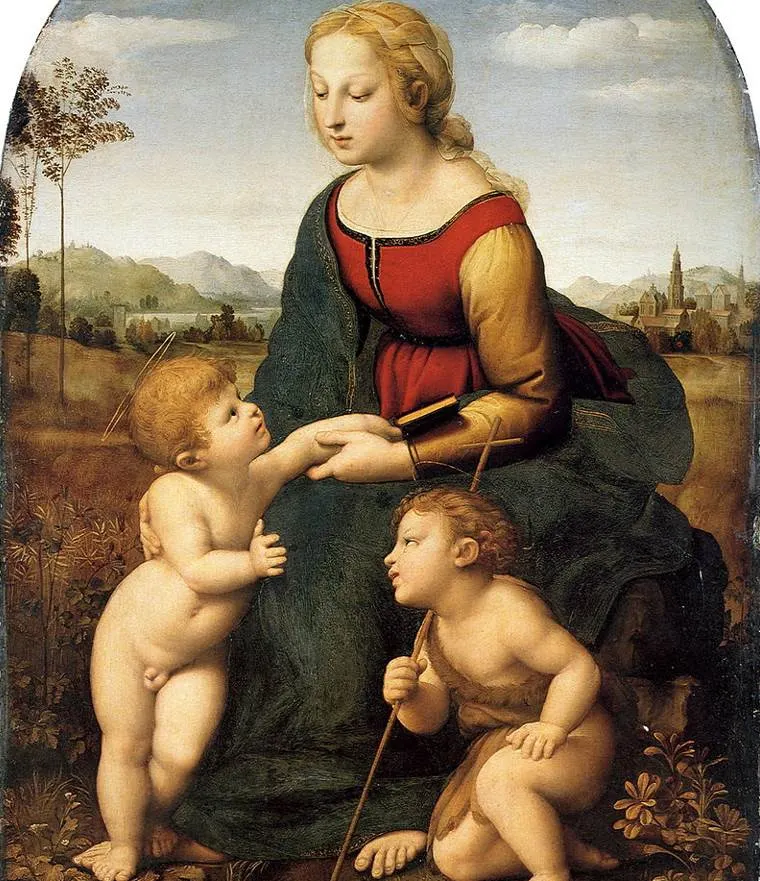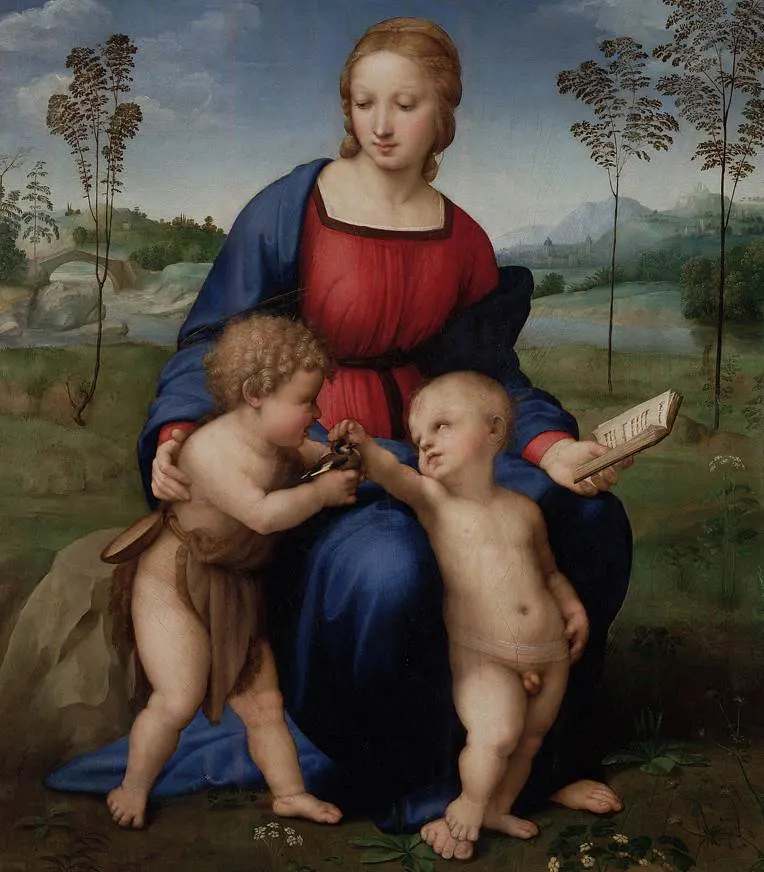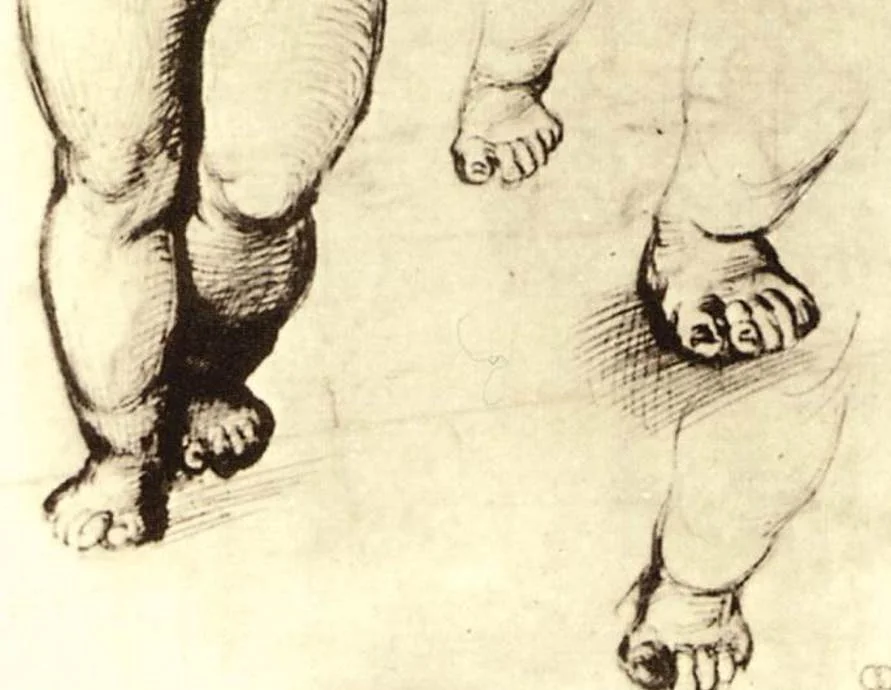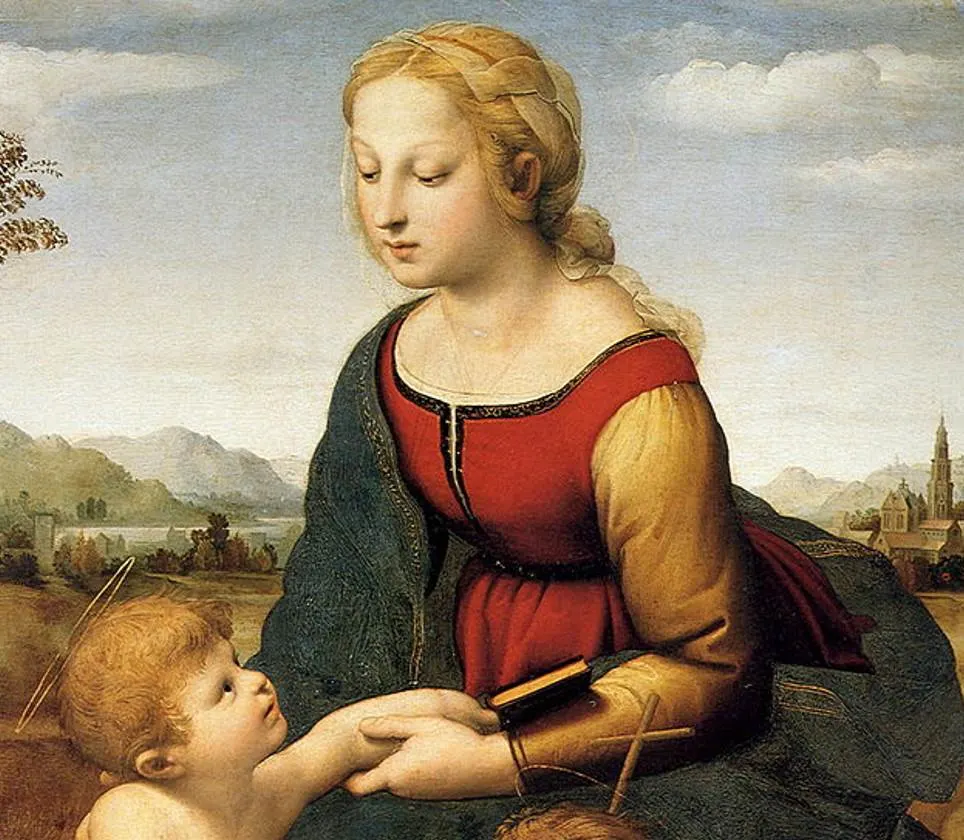Even though this remarkable artwork is considered to be one of the greatest works of Renaissance artist Raffaello Sanzio da Urbino (1483-1520), better known as simply “Raphael,” he didn’t manage to complete it during his lifetime.
This painting is known as “La Belle Jardinière,” and in this article, we’ll take a closer look at some of the most interesting facts about this remarkable work of art.
1. It was painted in the first decade of the 16th century
La Belle Jardinière is the name of a painting also sometimes referred to as “Madonna and Child with Saint John the Baptist.” It was painted somewhere between 1507 and 1508, a period that Raphael frequently stayed in Florence, Italy.
Even though he most probably never officially lived there, art historians define the period between 1504 and 1508 as his “Florence Period.” This is not because he was a resident of the city but because of the influence, other artists that once lived in the city had on him.
Even though he developed his style, the influence from the works of Leonardo da Vinci and Michelangelo can be seen as his potential reached maturity.

2. Raphael didn’t manage to complete this particular work
While Leonardo da Vinci is often described as the “Renaissance Man,” Raphael could be described as the “Renaissance Nomad.” At least, up until the moment that he left for Rome, a city he stayed in until his death in 1520 at the age of 37.
He certainly was a procrastinator such as Leonardo da Vinci, but he somehow didn’t manage to complete La Belle Jardinière. It was eventually finished by one of his colleagues named Ridolfo Ghirlandaio (1483-1561).
3. It depicts a common theme in the artist’s oeuvre
The works of Raphael were selling like hotcakes during the early 16th century. That’s mainly because he already established himself as a master as a teenager, one of the main reasons why he left behind such an impressive oeuvre considering he died way before his time.
This also means that he painted multiple works depicting the theme of the Madonna with Child, often featuring Saint John the Baptist as a child as well.

This particular painting was created along with similar works such as “Madonna of the Goldfinch” and “Madonna in the Meadow,” to name just a few paintings that feature the same composition and figures.

4. Raphael only depicted two religious symbols in this work
During his early years, Raphael tried to include as many religious symbols into his works as possible. The influence of other artists can be seen as the artist only included 2 symbols in this one.
One is a cross held by John the Baptist to the right of the Madonna, and the other are two delicate haloes above the children’s heads. The use of haloes completely stopped following the Renaissance.
5. It’s on public display at the largest museum in the world
The painting is believed to have been commissioned by a rich patron of the arts from the Italian city of Siena named Fabrizio Sergardi. What exactly happened to the painting upon completion remains somewhat of a mystery.
We do know, however, that it was acquired rather quickly by King François I of France, a man who reigned between 1515 and 1545. It was brought to France shortly after and remained in the royal collection.
This is how the painting made its way to the largest and one of the most famous museums in the world, the Louvre Museum in Paris. It remains on public display in the capital of France in Room 710 of the museum today.

More interesting facts about La Belle Jardinière by Raphael
6. None of Raphael’s Madonna paintings are works of monumental scale. At least not compared to the frescoes he eventually painted in Rome a couple of years later such as “The School of Athens” and “The Parnassus” in the Raphael Rooms of the Apostolic Palace in Vatican City.
La Belle Jardinière fits this description as it has dimensions of 122 × 80 centimeters (48 × 31.5 inches).
7. Despite the notion that Raphael didn’t complete the painting, Ghirlandaio is only credited with adding the blue robe that the Madonna is wearing. This is merely a feature that fills up the pyramidal composition created by Raphael.
This is also the reason why art historians consider this work to be one of the best Madonna portraits that Raphael created during his Florentine period.
8. It’s believed that Raphael got the inspiration for the little feet of the child Jesus from a sculpture created by Michelangelo called “Madonna of Bruges.”
He also made a preparatory drawing for this work. In this drawing, the resemblance between the child sculpted by Michelangelo and the way that Raphael depicted the child is quite striking.

9. Even though Ridolfo del Ghirlandaio only had a minor role in the work, he was still an established painter in Florence and received multiple commissions in the city.
He was the son of Domenico Ghirlandaio (1448-1494), one of the most famous artists in Florence at the time who had a large workshop. One of his most famous pupils was Michelangelo himself during his teenage years. This was even before he was sent to the Medici Academy.
10. The main reason why this work is considered to be one of the most famous works by Raphael during his Florentine period is because of the grace and beauty in which he depicted the Madonna.
The light and shadows he integrated using the sfumato technique to create a smooth transition between colors turn this work into an absolute masterpiece.
There’s something truly mesmerizing about the way the Madonna looks at her child Jesus, especially knowing that she is holding a book that foretells the story of her child’s death.

